Jasper National Park is the largest and wildest of Canada’s Rocky Mountain Parks and it is a fantastic place for wildlife watching. On a recent visit, we rounded a corner on the Maligne Lake road and spotted a small herd of bighorn sheep including an absolutely enormous ram. His massive horns curled around his head and he looked up at us from a spot near the edge of the road. He was absolutely beautiful. Here are some of our favorite photos and some suggestions for how to find and photograph wildlife in Jasper.
There are affiliate links in this post. If you make a qualifying purchase through one of these links, Wander Woman Travel Magazine may receive a small commission at no extra cost to you.
Table of Contents
Jasper Wildlife Photography
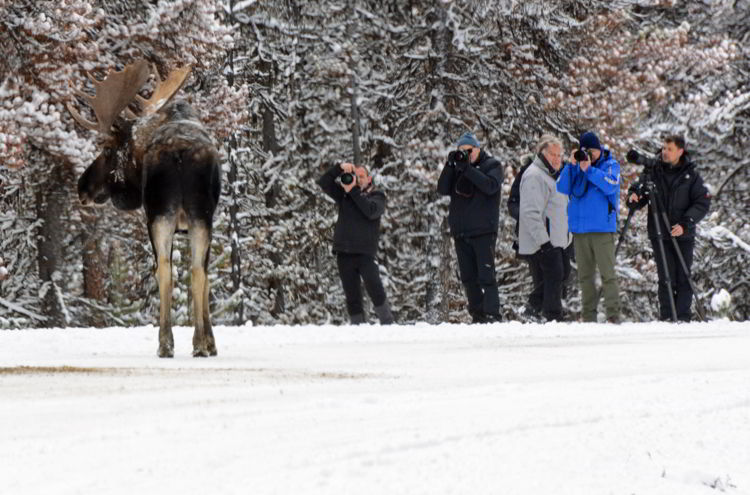
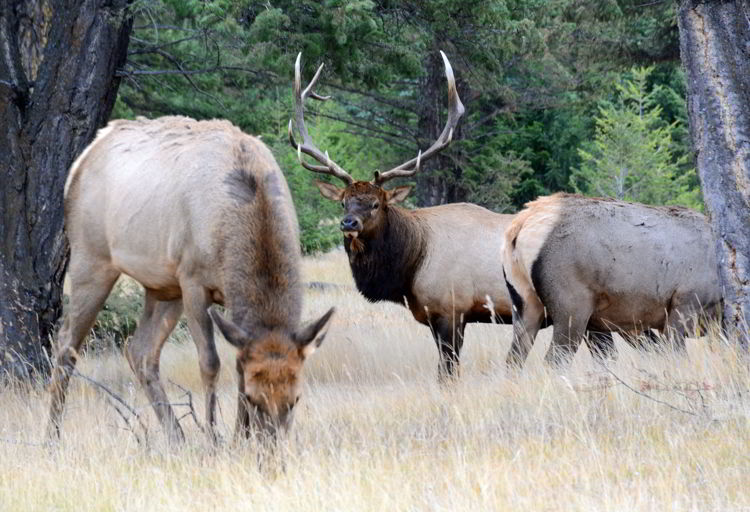
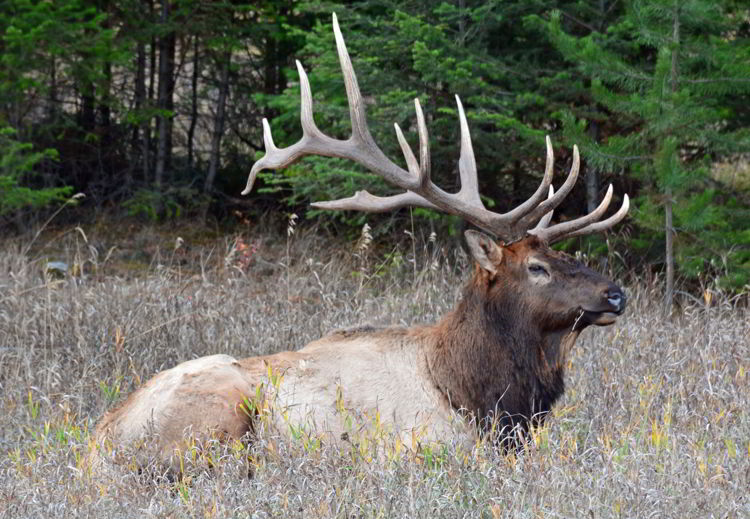
Wildlife Watching Safety Tips
Here are a few safety tips for wildlife viewing in the Canadian Rockies:
- In the words of Parks Canada – “take scenics, not selfies.” It’s really important to keep your distance when photographing wildlife. That means you’re going to need a camera with a good zoom lens. If you don’t want to invest in a DSLR, you can buy an inexpensive zoom lens for your phone.
- Never feed or touch a wild animal. It’s illegal, it’s unsafe for you and it’s bad for the animal. Many people are injured by deer every year when they get too close. Deer hooves are very sharp.
- If you’re driving and you spot an animal, pull over to the side of the road and stay in your vehicle. It’s especially hazardous to get outside your vehicle to take a picture of a bear or a moose.
- If you’re hiking in Jasper, be bear aware and always carry bear spray in case you surprise a bear and it attacks.

Jasper’s Land Mammals
There are 53 species of mammals in Jasper National Park and many birds. The most commonly seen animals are elk, deer, bighorn sheep, mountain goats, black bears, grizzly bears, coyotes and wolves. You may also see smaller species like marmots, pikas and squirrels. If you are very lucky, you might see a caribou.
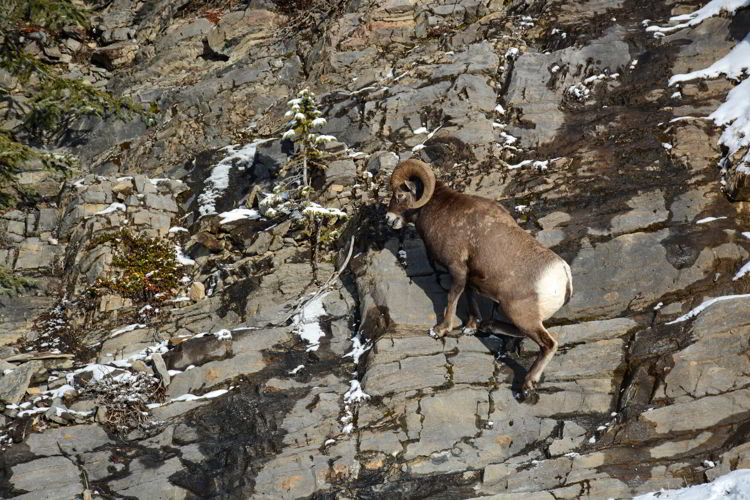
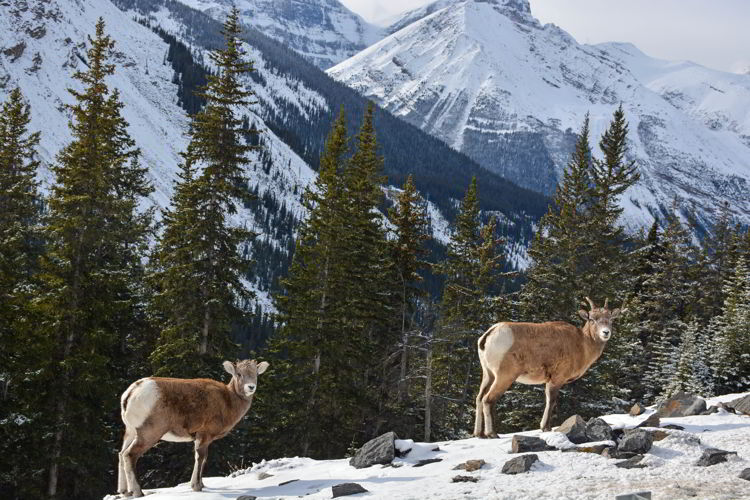
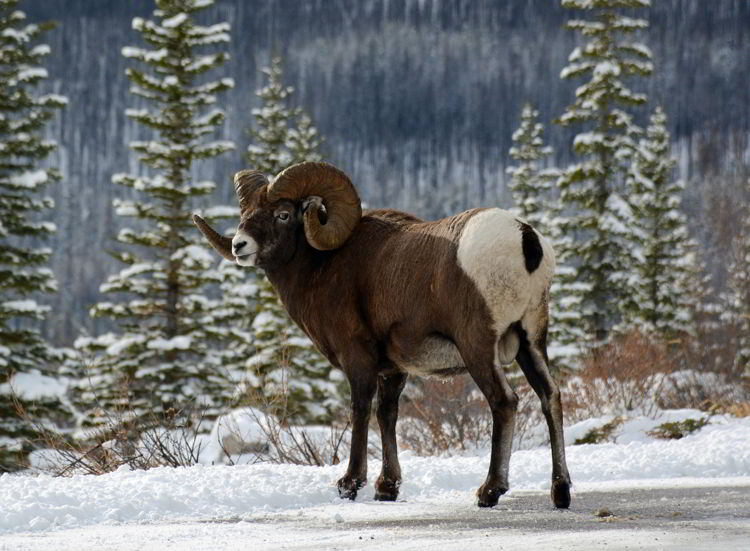
Related: Jasper is one of the world’s best hiking destinations. We recommend these 10 Amazing Jasper Hikes.
When to see Wildlife in Jasper
The best time of day for nature photography and wildlife watching is usually early or late in the day. Spring and fall are the seasons when animals are most active, but you can see wildlife in every season – even winter. Bears hibernate in winter, but many other species are active.
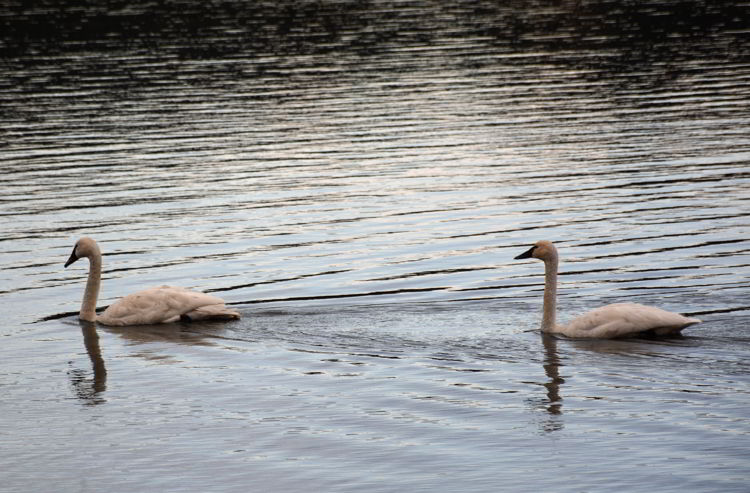
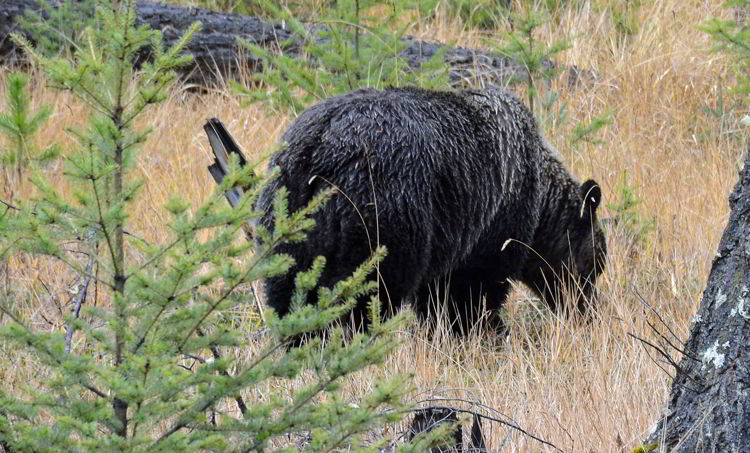
Black Bear or Grizzly – How to Tell the Difference
Body shape is the easiest way to identify a grizzly. Grizzly bears have a pronounced shoulder hump. They are also typically larger than black bears. They have a concave or “dished” facial profile, smaller ears and much larger claws than the black bear. (If you’re close enough to see the claws, you’re too close.) Black bears have a flatter nose, larger ears, smaller claws and no visible shoulder hump. Both species can come in a variety of colors, so color is not a good way to tell the difference. A cinnamon colored black bear is still a black bear and a blond grizzly is still a grizzly. Even though they are sometimes called “brown bears” in the United States, grizzlies can vary in color from light cream to black.
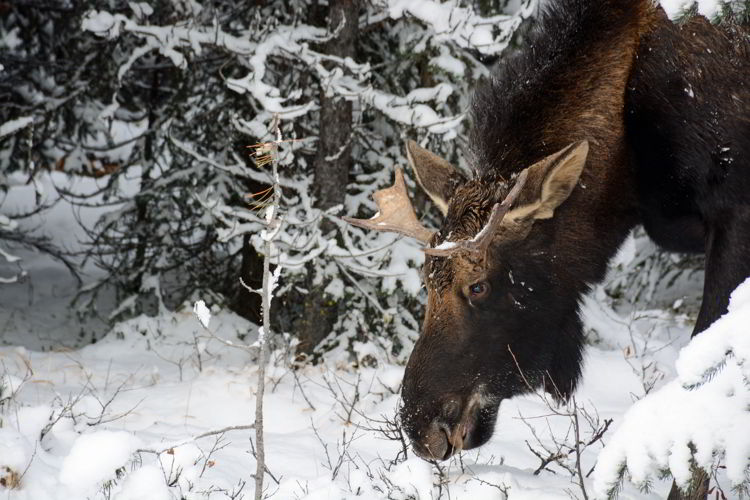
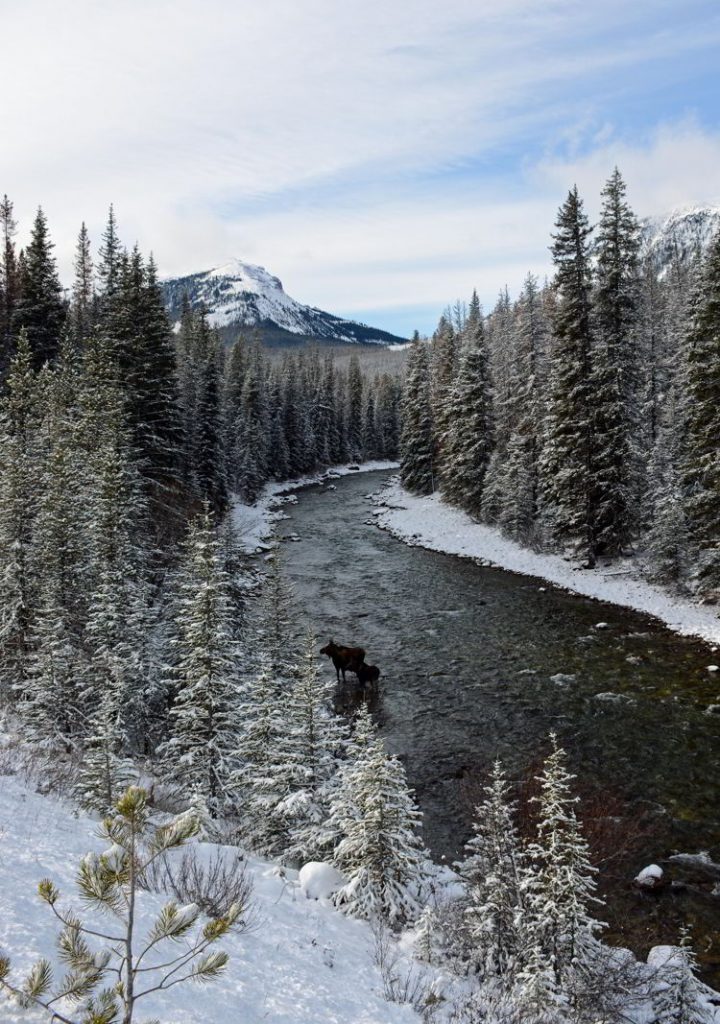
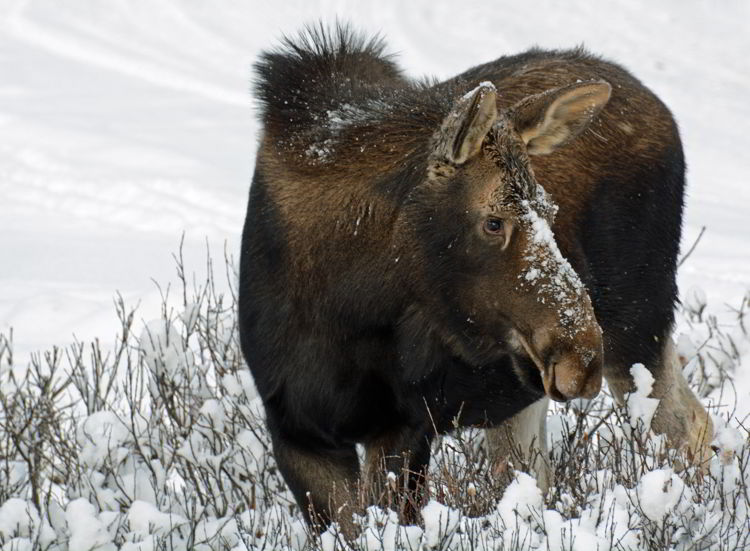
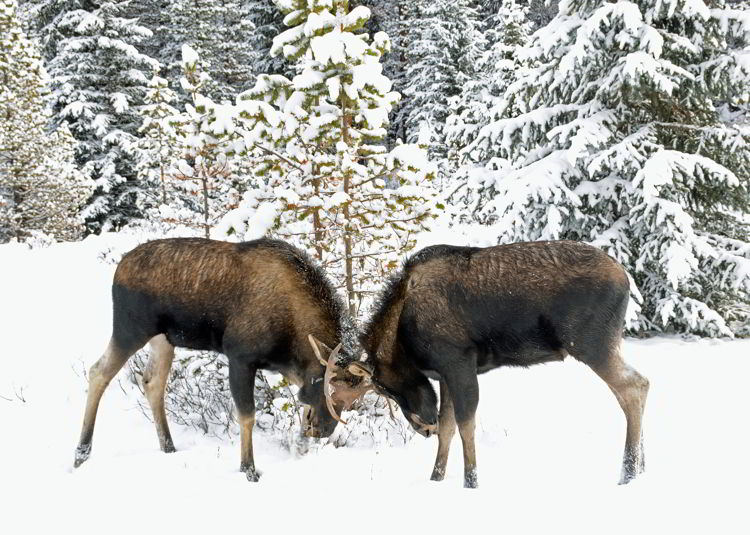
Where to find Jasper’s Wildlife
No matter the season, we always see wildlife in Jasper National Park. Make your first stop the Parks Canada Jasper Information Centre to talk to park staff about the latest wildlife sightings. The building is a national historic site. In our experience, Maligne Lake Road is a great drive for wildlife. We saw 10 moose on that road on a recent autumn drive. We’ve also had good luck seeing bears on the Pyramid Lake Road. We’ve spotted wolves along the Icefields Parkway and other wildlife as we drove around the park. Bighorn sheep sightings are almost guaranteed on the road to Miette Hot Springs. If you drive slowly and look carefully, you will see wildlife.
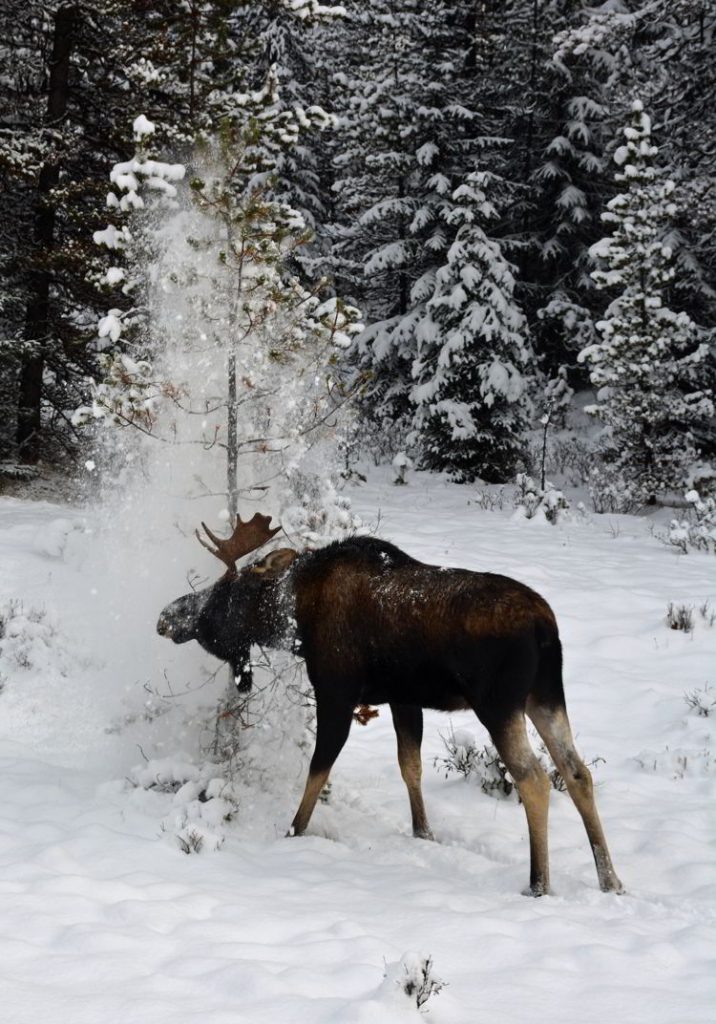
Wildlife Watching Tours in Jasper
We usually explore on our own, but on one visit to Jasper, we experienced a wildlife watching tour with Sundog Tours. We had a great time and saw moose, elk and deer during our day tour. It was a stress-free way to see and photograph wildlife.
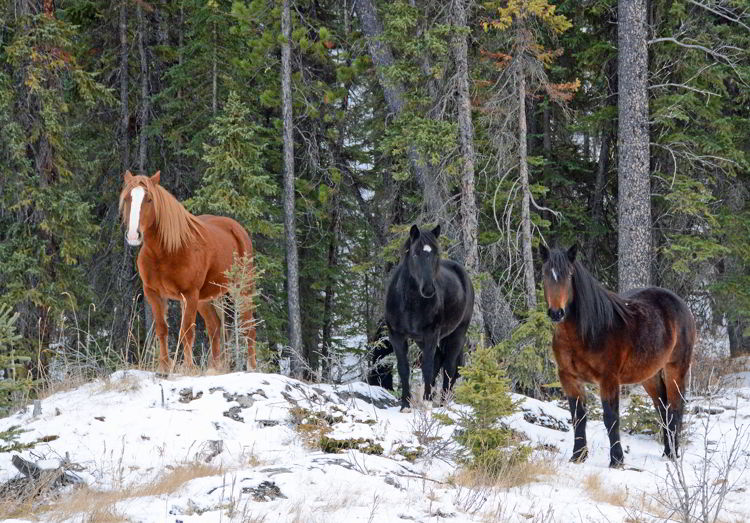
Related: Check out our post Jasper in Winter – 12 Stunning Photos.

4 Comments
James Ward
I visited Banff/Jasper in 1990 – lots of big bull elk. I was hoping to visit again, butwas told that most or all the bigger bulls have been euthanized, translocated or otherwise removed due to damage in the towns or threats to humans. Is it still common to see bigger bulls in September – there?
wanderwoman
Thanks for your comment, James. I haven’t heard anything about euthanizing elk in Jasper other than one incident a few years ago when a large bull elk attacked a woman and severely injured her. Whenever we go in the September, we always see plenty of big bulls. I’m sure you know this, but you do have to be careful around the big bulls – especially during the fall rutting season. They get really aggressive. I’m sure if you go in September, you’ll see them. Let us know if you have any other questions and thanks for reading our blog. Happy travels! -Debbie
Lynn Stone
Debbie, in your experience when do the bighorn rams move into the lower elevations? I’d like to be there as early as possible in October but not so early the sheep are still at high elevations. Thanks’
wanderwoman
Hi Lynn, That’s a tough question. My husband and I have been to Jasper several times during the annual Dark Sky festival held in mid October (October 15-24 this year) and we’ve seen bighorn rams every time. One of the best spots to look for bighorn rams is Maligne Lake Road. Last time we saw 10 moose on that drive in mid-October – most were close to Maligne Lake. I don’t know how early the rams come down from the higher elevations though. Mid-October has always been a good time for us to go and you can take in some of the Dark Sky events while you’re there. I’ve always wanted to attend during Symphony Under the Stars, an outdoor performance of the Edmonton Symphony Orchestra. I believe that event is happening on October 16 this year. Another good spot to see bighorn rams is near Abraham Lake in David Thompson Country. We see them almost every time we pass through that area. I hope that’s helpful. Please let me know if you see any big rams. I hope you do! All the Best, Debbie